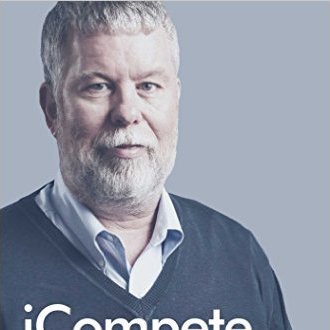
A Celebration Cocktail Each Executive Should Know How to Mix!
By Judith E. Glaser
Great leaders identify, measure, recognize, and reward meaningful efforts and achievements—and celebrate often with the people involved.
Why should managers and leaders celebrate more?
Creating a feeling of celebration helps meet people’s needs for inclusion, innovation, appreciation, and collaboration. Our brains are designed to be social – and the need for human contact is greater than the need for safety. The research by Matt Lieberman and Naomi Eisenberger, scientists at UCLA, has shown that feeling socially excluded activates some of the same neural regions that are activated in response to physical pain, suggesting that social rejection may indeed be “painful.”
Those companies practicing celebrations as part of their conversational rituals open up their employees to make them feel part of the company’s common success, enable them to have the confidence to challenge the status quo, take ambitious initiatives, and share their creative ideas with others.
How might the disciplined practice of celebration change the culture of a company?
From my study of The Neuroscience of WE™, and my work with executives, I know that celebration has a big impact on individuals, teams and companies. It literally works wonders in the brain.
Scientists are learning that our brain is more changeable than we ever imagined—our brains exhibit neuroplasticity. Our brain neurons can change their physiological properties in response to outside factors. That is how babies develop and learn. As we grow older we do not lose that ability to learn and modify our responses to things that happen. In fact, we now know that a percentage of our genes, can be impacted by the environment – these changes, called epigenetic changes, are part of neuroplasticity as well – however they open up a whole new set of insights about the power of conversations to change fundamental and long lasting changes to our character – yes nurture is as or more powerful than nature!
The Ingredients of Healthy Celebration Cocktails
Neuroscience explains what impact you as a leader can have on healthy physical and emotional changes of your team by having positive celebrations and intelligent conversations.
- Celebration Conversations elevate the level of such “feel good” chemicals as oxytocin and the endorphins – neuropeptides produced in the central nervous system. Their release into our system gives us a sense of well being, creating a safety space that enables us to experiment, take risks, learn and handle the challenges of growing the business.
- Serotonin that is boosted by cheering and pleasant conversations is widely known for transforming lazy people into enterpriser, low performer into go-getters, and skeptics into supporters. For individuals or teams, serotonin adds focus, support innovative or disruptive solutions, increases motivation and can even transform stress into success.
- Researchers found that by having positive conversations during celebration time you trigger basal ganglia system that releases the neurotransmitter dopamine. This chemical communicates with the brain areas in the prefrontal cortex to allow people to pay attention to critical tasks, ignore distracting information, and update only the most relevant task information in working memory during problem-solving tasks.
What Makes Us Feel So Good?
Recent studies by numerous researchers show that the basal ganglia facilitate learning, with dopamine important to the process. One way that these behavioral routines are encoded is by the processing of reward information.
Wolfram Schultz, a principal research fellow at the University of Cambridge in England, studies how the brain processes reward information. “When something is really good, you go back for it again,” he says. “ Thus, by praising the accomplishments a leader, we are contributing to creating healthy behavioral patterns that will be repeated more often. Celebration and dopamine is a reward to our brains like treats are to animals.
- While elevating the level of “feel good” hormones with positive conversations, the level of cortisol is significantly lowered. Cortisol has been shown to damage and kill cells in the hippocampus (the brain area responsible for your episodic memory) and there is robust evidence that excessive cortisol shuts down learning, creates anxiety attacks, can cause depression, and premature brain aging.
- The words of acknowledgement, encouragement and support, especially when granted to a person under much stress, calms her amygdala mediated response – of fight-flight-freeze – allowing her to move into a more thoughtful and calm state.
When we converse openly with others, we are sharing our inner world, our sense of reality, to validate our reality with others. We are measuring the levels of trust in our relationship to determine whether we can partner with others. The quality of our conversations depends on how open or closed we feel at the moment of contact. The neurochemical reactions in our brains drive our states of mind, and these affect the way we communicate, how we shape our relationships, and how we build trusting relationships with others.
When we receive public praise and support, we unlock these powerful set of neurochemical patterns that cascade positive chemistry throughout the brain. Highly motivated employees describe the feeling of performing well as an almost drug-like state.
When this state of positive arousal comes with appropriate, honest, and well-deserved (sincere) praise, employees feel they are trusted and supported by their boss. They will take more risks, speak up more, push back when they have things to say, and be more confident in their dealings with their peers.

Judith E. Glaser is CEO of Benchmark Communications, Inc. and Chairman of The Creating WE Institute. She is an Organizational Anthropologist, and consults to Fortune 500 Companies. Judith is the author of 4 best selling business books, including her newest Conversational Intelligence: How Great Leaders Build Trust and Get Extraordinary Results (Bibliomotion, 2013) Visit www.conversationalintelligence.com; www.creatingwe.com; jeglaser@creatingwe.com or call 212-307-4386.








